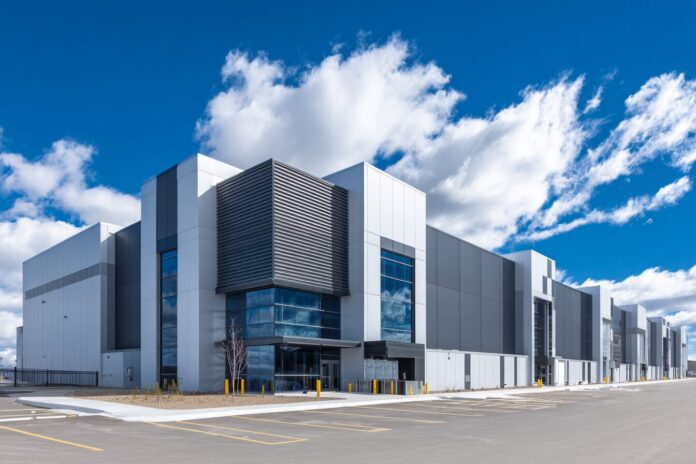Alberta Targets Large Data Centers With a New Levy
Most importantly, Alberta is taking decisive action by targeting large data centers with a new 2% levy on computer hardware. This levy is applicable to facilities with a power load of 75 megawatts or more, and it is scheduled to take effect on December 31, 2026. Because the measure follows a six‐week stakeholder consultation process, it demonstrates a careful balancing act between attracting investments and ensuring that local infrastructure services benefit from these lucrative operations.
In addition, the provincial government emphasizes that its strategic policy is designed to secure revenue for residents while maintaining Alberta’s competitive edge. Besides that, the initiative is part of a broader effort to safeguard public interests without hindering technological advancement. For further insight into the external perspectives on this policy, readers can explore detailed analysis in the Red Deer Advocate article.
Policy Details: Striking a Balance Between Growth and Fairness
Because competitiveness remains at the forefront of Alberta’s economic plan, the government has designed the levy to be fully offset against provincial corporate income taxes. This approach ensures that once data centers become profitable, their tax burden does not cumulatively increase, thereby maintaining a stable operating environment. Therefore, the policy offers a safety net, ensuring that new investments are not unduly penalized while also contributing to the province’s revenue stream.
Moreover, officials are exploring alternative mechanisms such as predictable payment-in-lieu-of-tax programs and temporary deferrals for new builds. These measures are intended to provide long-term planning benefits for businesses and reduce the initial cost impact. Most importantly, such flexibility in regulatory processes could be crucial as companies adjust their strategies in an increasingly competitive global market. For additional background on the policy mechanics, see the report by Bloomberg News.
Industry Reaction: Weighing the Costs and Benefits
After engaging with business leaders and consulting various stakeholders, Alberta’s new policy has received a mixed yet cautiously optimistic reaction from industry experts. On one hand, industry leaders appreciate that the levy is designed to protect public infrastructure and stimulate regional growth. They highlight that offsetting the levy with tax credits helps mitigate the financial burden, making Alberta an attractive destination for data center investments.
On the other hand, critics warn that the levy may compel some providers to reconsider their current strategies. Because providers with high energy consumption might find more favorable fiscal policies in other jurisdictions, there exists a real risk of migration. Besides that, these industry stakeholders suggest that policy predictability and a transparent regulatory framework are essential for long-term success. For a more comprehensive perspective on these concerns, consult the analysis provided by Brutalist Report.
Will Data Center Providers Move Elsewhere?
The critical question remains: will this tax encourage providers to relocate their operations outside Alberta? In part, this depends on several key aspects. Initially, jurisdictions without similar levies are likely to experience an influx of new data center developments as companies pursue more favorable tax climates. This migration risk is particularly keen as data center providers continually assess factors such as energy costs and infrastructure support.
Furthermore, the economic offset mechanism offers a counterbalance to these migration incentives. Because the levy is mitigated by reduced corporate tax liabilities, providers reaching profitability early may not endure significantly higher costs. Therefore, the overall impact on location choices could be less drastic than some critics fear. Indeed, as observed in the Bloomberg Tax report, regional policies and cost benefits are tightly interwoven, creating a dynamic equilibrium.
Broader Implications: Global Growth and Local Strategy
Because global demand for large-scale and AI-powered data centers is surging, governments worldwide are reassessing their approaches toward infrastructure investment and revenue generation. Alberta’s strategy is a clear example of how local policy can align with global technological growth trends. Most importantly, the levy highlights the broader debate on how to balance local fiscal benefits with the need to compete in the international market.
In addition, this evolving policy framework encourages multinational companies to factor in elements such as rising energy prices, access to renewable energy, and favorable labor markets in their decision-making process. Therefore, while the levy is only one piece of the puzzle, it carries significant weight in discussions concerning sustainable infrastructure investment. For further details on global insights, refer to the comprehensive hearing transcript available from the USCC Hearing Transcript.
Future Moves: Strategic Responses for Providers
Looking ahead, data center providers must stay agile in response to this shifting regulatory landscape. Most importantly, operators should monitor anticipated changes in tax and levy frameworks as jurisdictions vie for technological investment. Because evolving policies may impact cost structures and operational planning, being proactive is essential to remain competitive.
Therefore, engaging in continuous dialogue with policymakers and investing in robust legal and tax advisory services will prove invaluable. Besides that, companies should explore diverse strategic options such as in-house tax optimization and dynamic financial planning. These proactive steps will help mitigate risks and ensure long-term stability as Alberta and other regions adapt to a rapidly changing global market.
Ultimately, Alberta’s 2% hardware levy reflects an intricate balancing act between local public benefit and global economic competitiveness. As the regulatory environment continues to evolve, both public policy and industry strategy will play pivotal roles in shaping the future of data center investments.
References:



